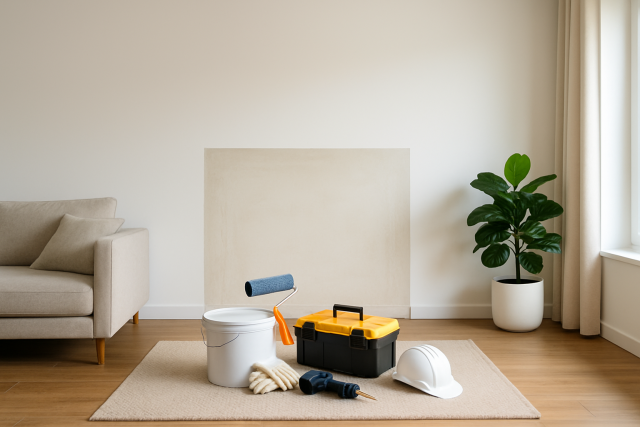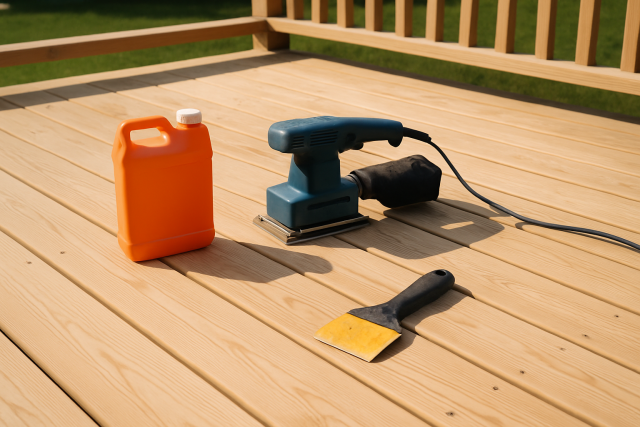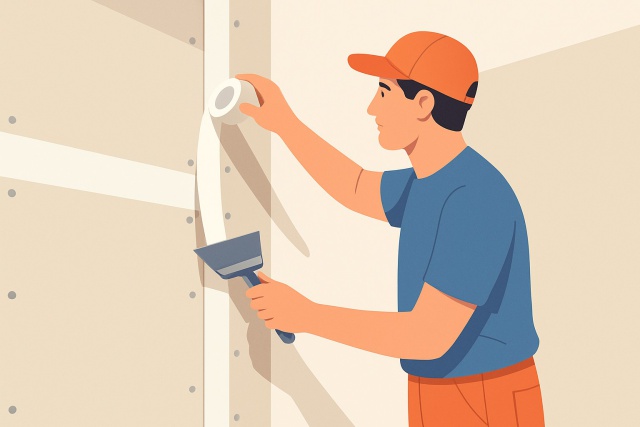Does Water Stain Granite or Is It Safe to Clean With Water?
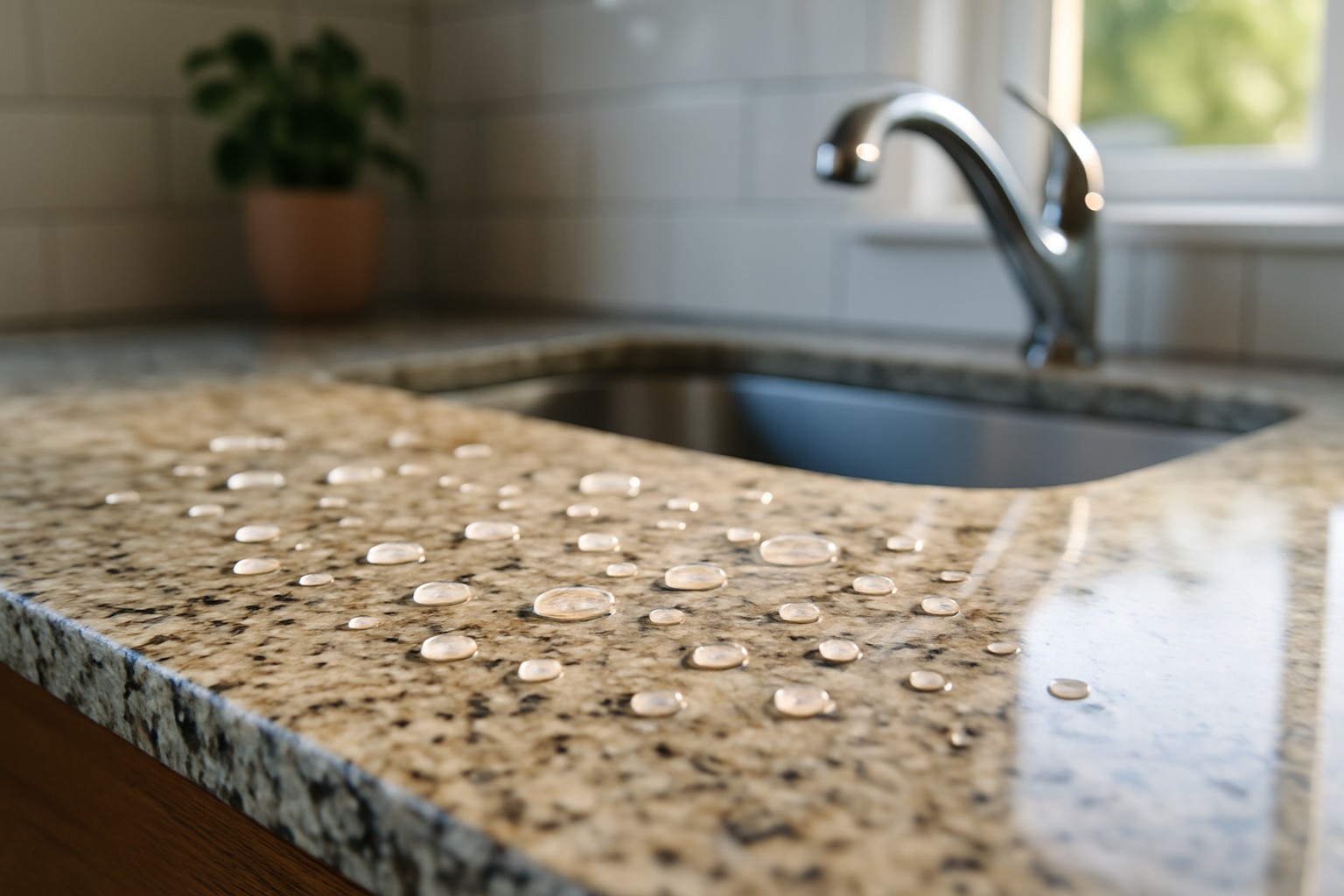
Granite surfaces have long been cherished for their stunning looks and rock-solid durability, especially when they grace kitchens and bathrooms. Yet, many homeowners wonder: does water stain granite, or can it mess with the surface over time?
Getting to Know Granite's Natural Properties up Close and Personal
Granite is a natural igneous rock composed mainly of quartz, feldspar and mica. Its mineral composition leaves tiny pores that allow it to absorb a small amount of water—usually between 0.1% and 0.4%. So yes, granite does soak up some moisture but the exact amount depends on the quality of the stone you’re dealing with.
Can Water Stain Granite? Getting to the Bottom of It
Many homeowners often worry that plain water might leave permanent stains on their granite surfaces. Pure water doesn’t actually stain granite. That said, water can sometimes leave behind temporary marks—think water spots or mineral deposits—especially if it’s carrying minerals or other impurities along for the ride.
- Water spots pop up when droplets dry and leave those pesky mineral deposits behind.
- Mineral rings often make an appearance thanks to the calcium and magnesium hanging out in hard water.
- Surface dullness usually happens when water lingers a bit too long, quietly wearing down the sealer over time.
- Etching is a less common chemical dance that leads to faint dulling of the surface, typically caused by acidic liquids rather than just plain old water.
Water quality really has a major say in how likely those pesky marks are to show up and how obvious they become. Hard water loaded with extra minerals usually leaves behind tougher deposits compared to its softer or distilled cousins. On top of that, local environmental quirks like airborne minerals or a mix of cleaning products in the water can subtly alter the way granite’s surface looks once it’s been exposed.
Can You Safely Clean Granite with Water
Cleaning granite with water is generally a safe bet—so long as you go about it the right way. Experts often recommend distilled or deionized water to keep pesky mineral buildup at bay. Lukewarm water tends to do the trick nicely, avoiding any thermal shock or unwelcome surface damage.
Gently brush or wipe away any loose debris and crumbs from the granite surface with a soft brush or a dry cloth. Think of it as giving your countertop a little pre-cleaning love.
Lightly dampen a clean microfiber cloth with lukewarm distilled water to help reduce minerals and impurities without fuss.
When cleaning the granite, use gentle circular motions. This not only looks a bit fancy but also helps avoid pesky scratches.
Do not let water pool or sit on the surface. Quickly wiping up any drips will save you from annoying marks later.
Finally, give your granite a good once-over with a dry lint-free cloth to completely dry it and keep stubborn watermarks at bay.
One of the classic slip-ups is using hard tap water, which has a sneaky way of leaving those pesky mineral stains behind. And if you’re the type to let water hang around on your granite surfaces for too long, it can slowly wear down that protective sealer—kind of like letting time tick away unnoticed. I’ve seen plenty of homeowners go for harsh chemicals or scrub away with abrasive tools, only to end up scratching or dulling the granite’s natural beauty. Stick with pH-neutral cleaners or a gentle mix of mild soap and water.
How to Troubleshoot Those Pesky Water Stains and Marks on Your Granite
Figuring out whether water has taken its toll on granite surfaces calls for a keen eye. Common giveaways include pesky white or cloudy spots, dull patches where the light just doesn’t want to play along or telltale rings left behind by lingering water. Every now and then you might spot a faint chalky film—that’s usually mineral buildup making a cameo rather than a stubborn permanent stain.
| Symptom | Probable Cause | Recommended Test | Immediate Action |
|---|---|---|---|
| White cloudy spots | Hard water deposits | Give the area a gentle wipe with a damp microfiber cloth; if the spot lightens or fades away, you’re probably dealing with mineral buildup. | Clean the surface using distilled water and make sure to dry it thoroughly; if stubborn, a stone-safe cleaner can come to the rescue. |
| Dull patches | Sealer breakdown | Drop a few drops of water on the spot; if it soaks in or darkens, it’s time to think about resealing. | Follow the granite sealer directions carefully—patience is key here. |
| Mineral rings | Water pooling in one spot | Check for standing liquid or any residue lingering around. | Don’t let spills hang around—wipe them up right away and clean with distilled water to keep things fresh. |
| Permanent dark stains | Unsealed granite or liquid seepage | Try separate blot tests using water and oil to pinpoint the culprit. | You might want to call in the pros for stain removal or a bit of stone restoration; sometimes it’s not a DIY job. |
Checking Surface Contamination and Identifying Stain Types
Homeowners can try a few straightforward tricks, like giving suspicious spots a wipe with a damp microfiber cloth to see if anything comes off. They might also drop a little water and some oil on the surface just to watch how it behaves.
How to Tackle Those Pesky Granite Issues Caused by Water
- Use stone-safe, pH-neutral cleaners specially designed for natural stone to gently lift mineral deposits without causing any headaches.
- Avoid vinegar or other acidic cleaners for water stains—they have a nasty habit of etching or dulling the surface, which nobody wants.
- Grab some granite polishing products that do a great job bringing back that lovely shine and knocking out any dullness.
- Make it a habit to reseal your granite surfaces regularly to keep water from sneaking in and leaving stubborn stains behind.
- When stubborn or deep stains just won’t quit, call in the pros—granite restoration experts have the know-how to treat the area safely and effectively.
Avoid using harsh acids like vinegar or lemon juice on granite since they can react with the stone and leave dull spots or cause lasting damage. It’s best to use cleaners made specifically for granite or go old-school with mild soap and distilled water.
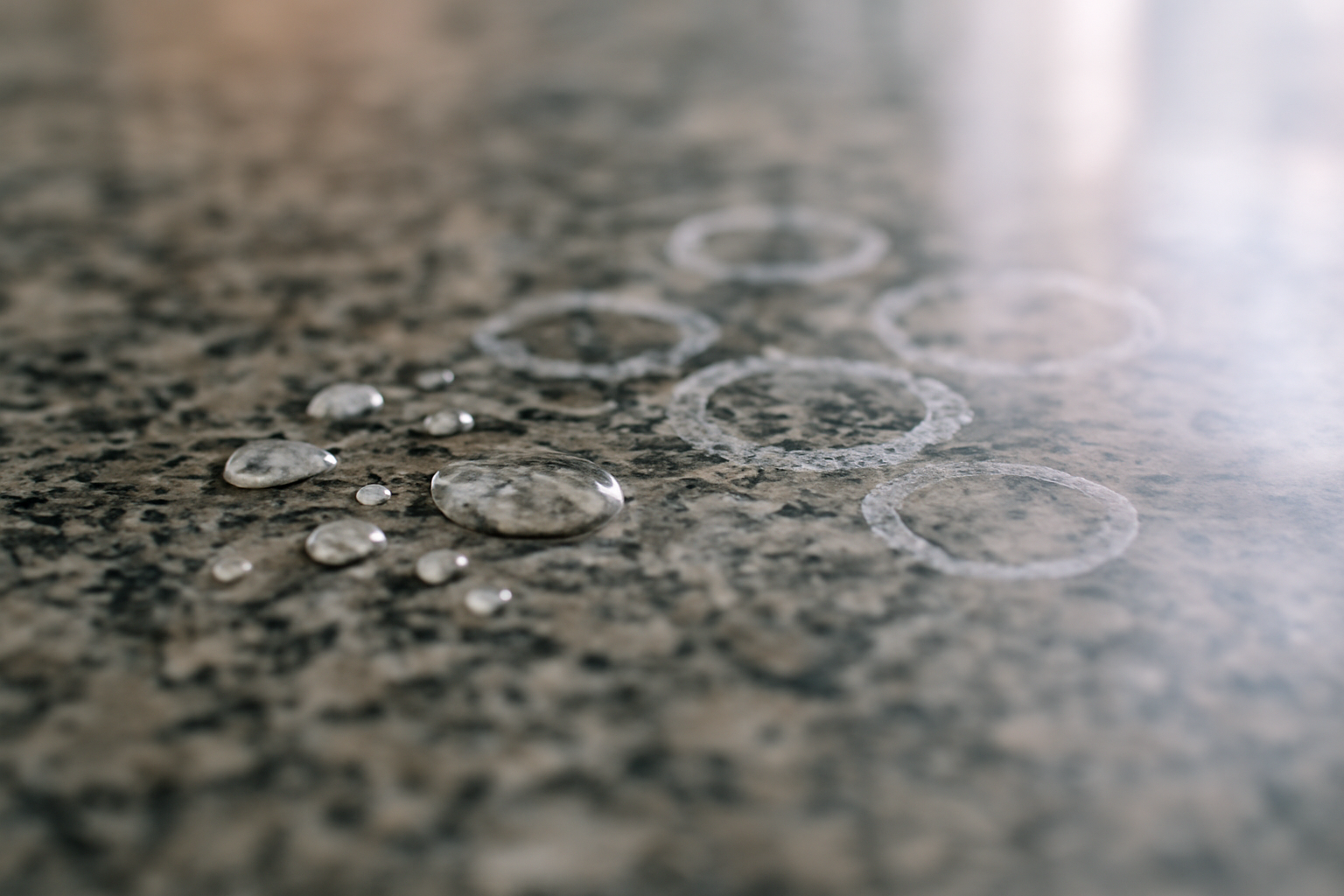
How to Keep Those Pesky Water Stains at Bay and Make Your Granite Surfaces Shine Like New
Preventing water stains on granite really hinges on consistent care, especially making sure to seal the surface before its protective barrier starts to give way. A quick swipe to wipe up spills and standing water goes a long way in cutting down those pesky mineral deposits and keeping the stone looking sharp and fresh. Tossing in coasters and mats isn’t just a good habit—it’s a clever way to fend off direct liquid exposure.
Keep an eye on your granite's seal by dropping a little water on it now and then. If it soaks in and leaves the surface darker, it’s time to refresh it with some resealing.
Whenever water spills, grab a soft cloth and wipe it up immediately because this is the best way to prevent any annoying puddles from settling in.
Reach for pH-neutral cleaners that are gentle on stone instead of harsh or abrasive ones that could cause more harm than good.
Avoid scrubbing pads or stiff brushes as they might scratch or wear down the sealer and stone, which nobody wants.
Use splash guards or mats in the busiest kitchen or bathroom areas to keep water where it belongs and save yourself some future headaches.
Environmental factors like high humidity or super hard water can really put the squeeze on granite, speeding up wear or encouraging those pesky mineral deposits to show up.
When It is Definitely Time to Call in a Pro for Those Pesky Granite Stains
Many water-related issues with granite can be nipped in the bud with the right cleaning and regular upkeep - including the common question 'does water stain granite?' Some stubborn stains or surface damage need a professional eye. When discoloration, etching or rough patches won’t budge despite your best efforts, it’s usually wise to call in a specialist for stone restoration.
- Stains that stubbornly stick around even after you’ve cleaned and resealed the surface.
- A noticeable dullness or etching that shows up despite regular upkeep and makes the surface lose its charm.
- A rough or uneven texture that hints the surface has taken a beating over time.
- Deep dark stains that have seeped through the sealer and are a real headache to tackle.
- Damage caused by previous use of harsh chemicals like bleach or acidic cleaners, leaving a not-so-friendly mark behind.


